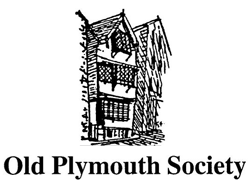by David Chamberlains
Published December 2012
Chris Robinson’s article “Plymouth’s Oldest Post Box” in the September 2001 edition of “Old Plymouth Today” should prompt the question: “How did the inhabitants of Plymouth post their letters before the introduction of the pillar box?”
In the early 1800s the answer is simple. They had to take their letters to the Post Office and hand them in. Before 1834 the only post offices in the town of Plymouth were the Plymouth office in Lower Broad Street (later renamed Bilbury Street) and a semi-official office in Southside Street situated at the Navy Hotel and run by a private contractor who handled letters to and from merchant shipping in Plymouth harbour. Because Plymouth was expanding rapidly, the Chamber of Commerce petitioned several times in the early part of the 1800s for the establishment of Receiving Houses in the town, but the petitions had been turned down.
In 1833 the Chamber of Commerce submitted a further petition. The Postmaster, Charles Markes, asked for a survey to be carried out with a view to having three sub-offices opened – one at the Navy Hotel and two others at the extremities of the town. In early 1834 a survey was carried out and it was recommended that the Barbican office be rejected but that the other two be approved. The Postmaster General agreed and in March that year two sub-offices were duly set up.
The first office, or Receiving House, was at John Holman’s chemist shop at 1 George Street. This was situated where the southern entrance to Dingles now stands. This office was known as “Town A”. The second office, known as “Town B”, was at John Smith’s chemist shop at 30 Old Town Street. This was situated where the corner entrance to Marks & Spencer can now be found.
Letters were collected three times a day and taken to the Head Post Office. There they were stamped with a letter A or B to show where they had been posted, counted and recorded. These records were important because the Head Postmaster had to justify the cost of using the Receiving Houses. Salaries paid to the two chemists are recorded as £8 per annum at first. In 1846 John Holman applied for and was granted a rise in salary to £10. This reflected the greater number of letters that he handled compared with John Smith.
Because of the introduction of the Uniform Penny Post in 1840 the amount of mail handled by the GPO increased dramatically. As a result, the Head Post Office in Bilbury Street was enlarged. But this was only a temporary arrangement because, in 1847, a new office opened in Whimple Street, on the corner of St Andrews Place. It must be remembered that Plymouth was expanding rapidly and it soon became obvious that the two Receiving Houses, each only a quarter of a mile from the new Head Office, would have to be relocated. In 1848 the two original Receiving Houses were closed and replaced by other locations. White’s Directory records “Receiving boxes at 14 Union Street, 11 Exeter Street and 22 Tavistock Street”.
A GPO record of 1852 informs that a request has been made for a Receiving House to be opened in York Street – the salary to be £6 per annum. A covering minute from a surveyor’s report (all original reports are missing) dated 8th November 1855 states: “As Mr Cresswell, after reconsideration, adheres to his proposal for the erection of 5 pillar boxes in the town of Plymouth, I think his views should be adopted together with the proposed closing of the Receiving Houses in Old Town Street, the establishment of a fourth daily collection of letters, and the readjustment of the remaining Receivers’ salaries – the increase of annual expense will be only £4 per annum.”
Further records give details of wall letterboxes (invented by George Cresswell) being installed at Plymstock, Hooe and Turnchapel and later at South Devon Place and Queen Annes Battery. Finally, in October 1862 a report states, “As recommended by the Surveyor, the vacant Receiving Office in Exeter Street may be abolished and a pillar letter box erected in its stead. This arrangement will save £5 per annum (the receiver’s salary) to the Revenue.”
From all this we can see that pillar boxes first arrived in Plymouth probably on 1856, some 16 years after the arrival of the first postage stamps. Before that it was off to the chemist to buy a bottle of linctus and post a letter.
